Description
Familiarity with treatment
A brow/forehead lift is a cosmetic surgical procedure that aims to reposition the forehead, reduce wrinkles, and create a more youthful appearance. Here is an explanation of the procedure:
Evaluation and Consultation: Before the surgery, you will have a consultation with a qualified plastic surgeon. They will evaluate your facial features, discuss your goals and expectations, and determine the most suitable brow/forehead lift technique for you.
Anesthesia: Brow/forehead lift surgery is typically performed under general anesthesia or intravenous sedation. The anesthesia ensures that you are comfortable and pain-free during the procedure.
Incision Placement: The surgeon will make incisions in specific locations depending on the chosen technique. There are different types of incisions used in brow/forehead lift surgery, including the classic lift, endoscopic lift, and temporal lift.
- Classic Lift: The incision starts at the level of the ears and goes up around the hairline. This method allows the surgeon to work on the forehead and brow area effectively.
- Endoscopic Lift: Several shorter incisions are made within the scalp. A small camera called an endoscope is inserted through one of the incisions to guide the surgeon during the procedure.
- Temporal Lift: This technique specifically targets the lateral eyebrow area and may involve smaller incisions around the temples.
Tissue Adjustment: Once the incisions are made, the surgeon will lift and reposition the underlying tissues, including the forehead muscles and brow tissues. This helps to smooth out wrinkles, raise the brow, and create a more youthful appearance.
Excess Skin Removal: If necessary, the surgeon will remove any excess skin to achieve the desired aesthetic outcome.
Closure: The incisions are then closed with sutures or other closure techniques. The surgeon takes care to minimize visible scarring by placing the incisions within the hairline or in natural creases.
Recovery: After the surgery, you will be monitored in a recovery area before being discharged. You will receive specific postoperative instructions, including information about wound care, medication, and follow-up appointments. It’s important to follow these instructions for optimal healing and recovery.
Who is it suitable for?
A brow/forehead lift is suitable for individuals who are experiencing certain aesthetic concerns in the forehead and brow area. Here are some factors that may make someone a good candidate for a brow/forehead lift:
Sagging Brows: If you have low or sagging brows that give your face a tired, sad, or angry appearance, a brow/forehead lift can help raise and reposition the brows to a more youthful position 1.
Forehead Wrinkles: Brow/forehead lifts can address horizontal forehead wrinkles and frown lines between the eyebrows, improving the overall smoothness and appearance of the forehead 2.
Excess Skin: If you have excess skin in the forehead area that contributes to a heavy or drooping brow, a brow/forehead lift can help remove or reposition the skin for a more rejuvenated look 1.
Desire for Facial Rejuvenation: Individuals who desire a more refreshed and youthful appearance may consider a brow/forehead lift as part of their overall facial rejuvenation goals.
Who is it not suitable for?
A brow/forehead lift may not be suitable for everyone. Here are some factors that may make someone not suitable for a brow/forehead lift:
Medical Conditions: Individuals with certain medical conditions or underlying health issues may not be suitable candidates for a brow/forehead lift. These conditions can include uncontrolled high blood pressure, bleeding disorders, autoimmune diseases, or certain skin conditions. It’s important to discuss your medical history with a qualified plastic surgeon to determine if you are a suitable candidate.
Unrealistic Expectations: It’s important to have realistic expectations about the outcome of a brow/forehead lift. While the procedure can provide significant improvement, it may not completely eliminate all signs of aging or achieve a specific desired appearance. It’s important to have a thorough discussion with your surgeon about your goals and expectations.
Smoking: Smoking can impair the healing process and increase the risk of complications. Surgeons often recommend that individuals who smoke quit or at least refrain from smoking for a certain period before and after the surgery. Smoking can affect blood flow and increase the risk of poor wound healing.
Insufficient Skin Elasticity: The success of a brow/forehead lift depends on the elasticity of the skin. If the skin lacks sufficient elasticity, it may not respond well to the lifting and repositioning during the procedure. A qualified plastic surgeon can assess your skin’s elasticity during a consultation.
Unstable Weight: Significant weight fluctuations can affect the results of a brow/forehead lift. It’s generally recommended to be at a stable weight before undergoing the procedure to ensure optimal and long-lasting results.
Advantages
There are several advantages to undergoing a brow/forehead lift procedure. Here are some of the benefits:
Improved Appearance: A brow/forehead lift can help raise and reposition the eyebrows, resulting in a more youthful and refreshed appearance. It can correct sagging brows, reduce forehead wrinkles, and smooth out frown lines, giving the face a more relaxed and rejuvenated look 1.
Enhanced Facial Harmony: By addressing the position of the brows and forehead, a brow/forehead lift can improve the overall balance and harmony of the face. It can create a more symmetrical and proportionate appearance, enhancing facial aesthetics 2.
Boost in Self-Confidence: Many individuals who undergo a brow/forehead lift report an increase in self-confidence and improved self-image. The procedure can help individuals feel more satisfied with their appearance and may positively impact their social and professional interactions.
Customized Techniques: There are different techniques available for brow/forehead lift surgery, including the classic lift, endoscopic lift, and temporal lift. Surgeons can tailor the approach to meet the specific needs and goals of each patient 3.
Long-Lasting Results: While the aging process will continue, a brow/forehead lift can provide long-lasting results. The repositioned brows and smoother forehead can maintain their improved appearance for many years, helping individuals enjoy the benefits of the procedure for an extended period.
Complications
Like any surgical procedure, a brow/forehead lift carries potential risks and complications. Here are some of the complications that can occur:
Scarring: Brow/forehead lift surgery does cause scars. However, skilled surgeons make efforts to hide the scars either at the hairline or within the hair to minimize their visibility. If you have concerns about scarring, it’s important to discuss them with your provider 1.
Bruising and Swelling: It is common to experience bruising and swelling on the forehead and face after a brow/forehead lift. These side effects are temporary and typically resolve within a few weeks 1.
Numbness: Some individuals may experience temporary numbness in the forehead after the surgery. This numbness usually recovers within one year, but it can vary from person to person.
Complications from Anesthesia: As with any surgical procedure, there are potential risks associated with anesthesia. These risks can include adverse reactions, respiratory issues, or complications related to the administration of anesthesia. Your anesthesiologist will discuss these risks with you prior to the surgery.
Infection: Although rare, there is a risk of infection after a brow/forehead lift. Surgeons take precautions to minimize this risk, such as prescribing antibiotics and providing detailed postoperative care instructions 2.
Bleeding: Excessive bleeding during or after the surgery is a potential complication. Surgeons take measures to minimize bleeding during the procedure and closely monitor patients during the recovery period.
Nerve Injury: There is a small risk of nerve injury during a brow/forehead lift, which can result in temporary or permanent changes in sensation or movement. Surgeons take precautions to minimize this risk and ensure the safety of the facial nerves 3.
Unsatisfactory Results: While a brow/forehead lift can provide significant improvement, there is a possibility that the desired aesthetic outcome may not be fully achieved. It’s important to have realistic expectations and discuss your goals with your surgeon during the consultation 4.
Previous care
After undergoing a brow/forehead lift, proper care and recovery are essential for optimal healing and results. Here are some general guidelines for postoperative care:
Follow Surgeon’s Instructions: Your plastic surgeon will provide specific instructions for your recovery. It’s important to follow these instructions carefully to ensure proper healing and minimize the risk of complications.
Head Elevation: Keeping your head elevated, especially while sleeping, can help reduce swelling and promote healing. Use pillows to prop up your head and maintain an elevated position.
Avoid Strenuous Activities: During the initial recovery period, it’s important to avoid any vigorous physical activities or exercises that may strain the surgical area. Your surgeon will provide guidance on when it is safe to resume normal activities.
Medication and Wound Care: Your surgeon may prescribe medications to manage pain and prevent infection. Follow the prescribed medication schedule and take any antibiotics as directed. Proper wound care, such as keeping the incision sites clean and dry, is crucial for preventing infection.
Avoid Sun Exposure: Protect the surgical area from direct sun exposure. Sunscreen with a high SPF should be applied to the forehead and brow area when going outside. Wearing a wide-brimmed hat or using an umbrella can also provide additional protection.
Manage Swelling and Bruising: Swelling and bruising are common after a brow/forehead lift. Applying cold compresses or ice packs to the area can help reduce swelling and alleviate discomfort. However, it’s important to follow your surgeon’s instructions regarding the use of ice or heat on the operated area, as different surgeons may have different recommendations.
Attend Follow-up Appointments: Regular follow-up appointments with your plastic surgeon are important for monitoring your healing progress. These appointments allow your surgeon to assess your recovery, remove any sutures or drains if necessary, and address any concerns or questions you may have.
Aftercare
Aftercare following a brow/forehead lift is crucial for proper healing and optimal results. While specific instructions may vary depending on your surgeon and individual circumstances, here are some general guidelines:
Follow Your Surgeon’s Instructions: It’s important to carefully follow the postoperative instructions provided by your plastic surgeon. These instructions may include wound care, medication usage, and specific guidelines for activity levels and restrictions.
Manage Discomfort: You may experience some discomfort, tightness, or mild pain after the surgery. Your surgeon may prescribe pain medication or recommend over-the-counter pain relievers to help manage any discomfort. Follow their instructions regarding pain management.
Keep the Incision Sites Clean: Proper wound care is essential for preventing infection and promoting healing. Your surgeon will provide instructions on how to clean the incision sites and may recommend using a gentle cleanser or saline solution. Avoid scrubbing the incisions and pat them dry with a clean towel.
Protect the Incision Sites: It’s important to protect the incision sites from excessive sun exposure, as UV rays can cause discoloration and interfere with healing. Your surgeon may recommend using sunscreen with a high SPF and wearing a wide-brimmed hat when going outside.
Avoid Strenuous Activities: During the initial recovery period, it’s important to avoid activities that can strain the surgical area. Your surgeon will provide guidance on when it is safe to resume normal activities, including exercise and heavy lifting.
Attend Follow-up Appointments: Regular follow-up appointments with your plastic surgeon are essential for monitoring your healing progress. These appointments allow your surgeon to assess your recovery, remove any sutures or drains if necessary, and address any concerns or questions you may have.
Be Patient: It’s important to remember that the healing process takes time. Swelling and bruising are common after a brow/forehead lift and will gradually subside over several weeks. Be patient and allow your body to heal at its own pace.


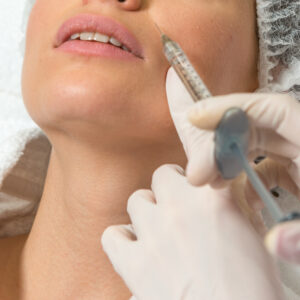
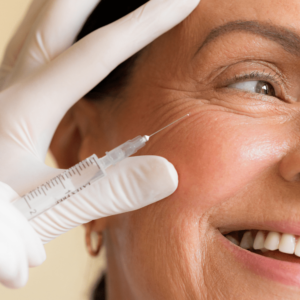
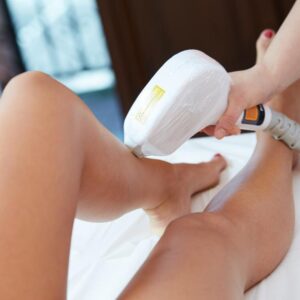
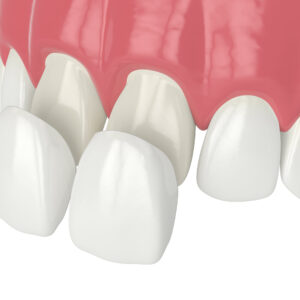
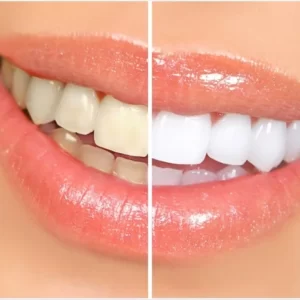

Reviews
There are no reviews yet.